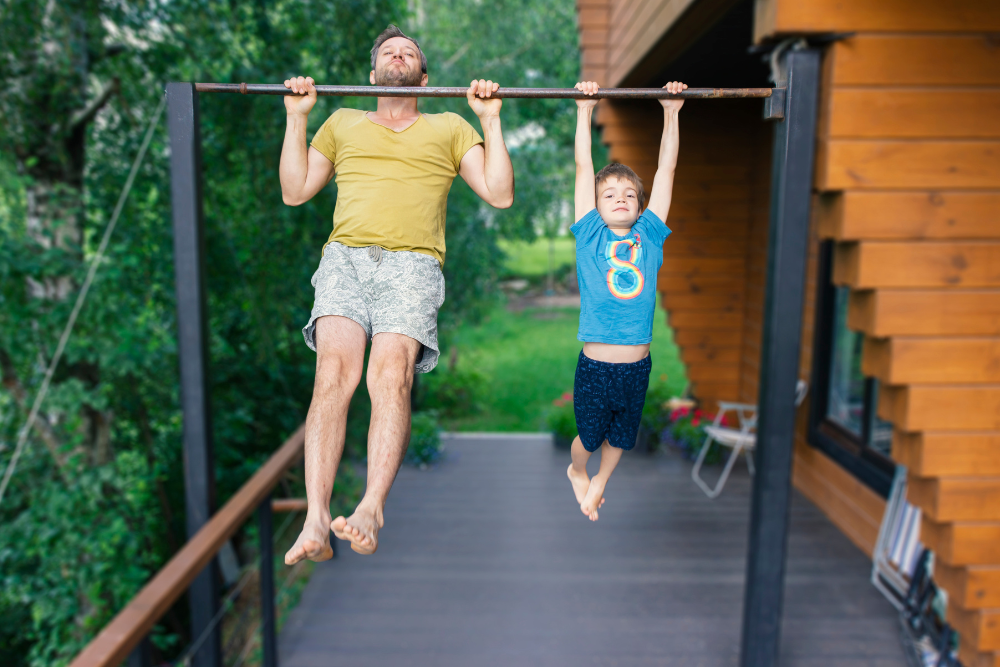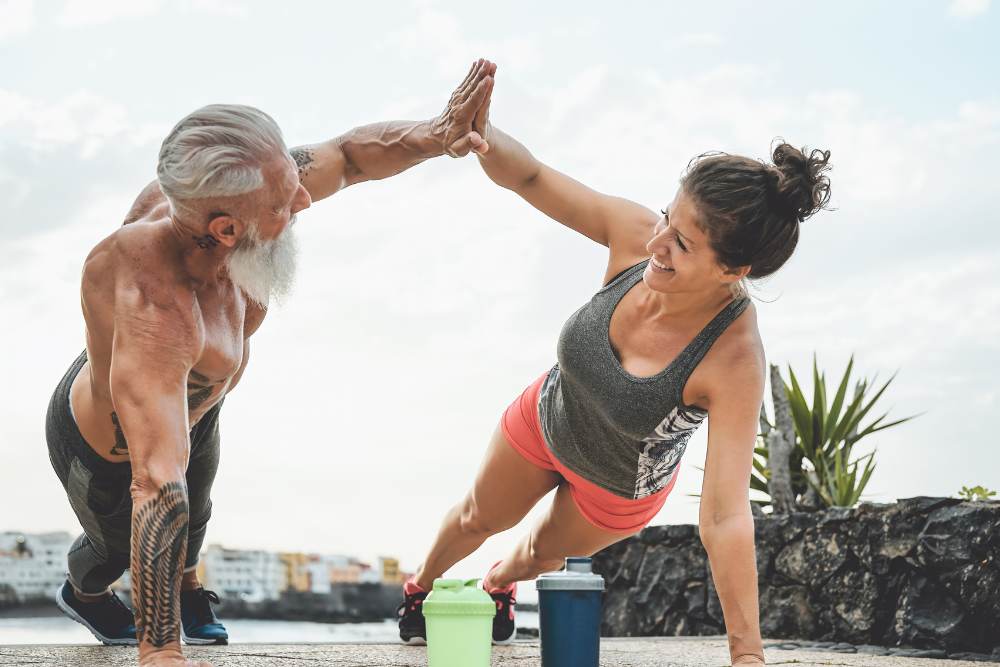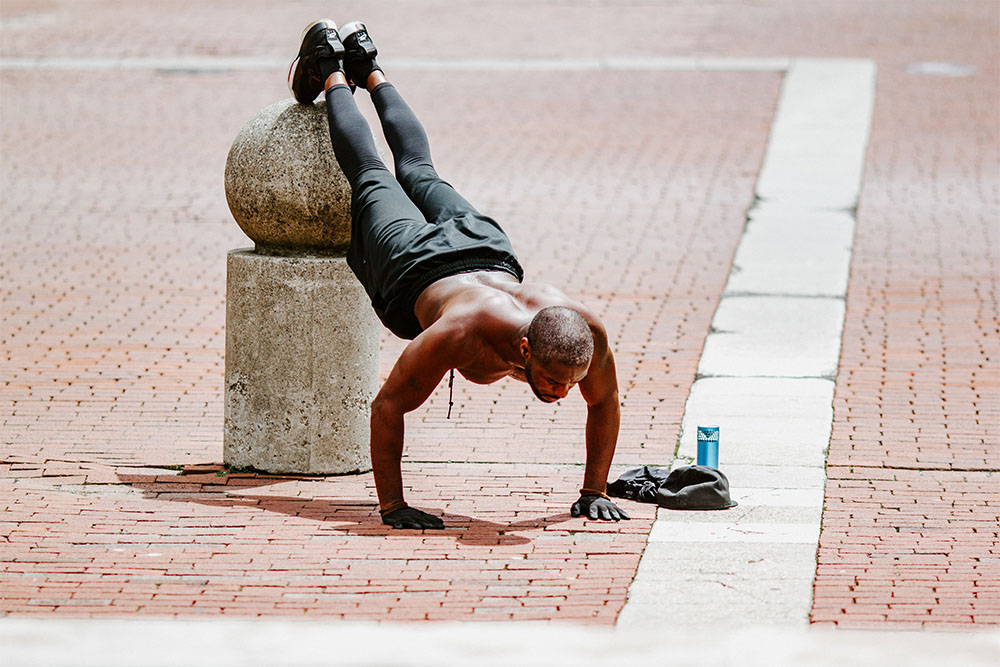Stop Taking Loans on Your Health

Over the last few years “hustle” culture has embedded itself into the lives of people across the globe.
However, while the drive to work yourself to the bone in your twenties, thirties, and forties to set yourself up in your later years may have a positive impact on your financial situation, it is likely to have a negative impact on your health.
See, taking loans on your health is never a good idea.
How do healthy actions in young/middle age affect your aging body?
People fail to realise that what you do in your younger years pay huge dividends in later life.
There is an abundance of research indicating that those individuals who actively participate in regular aerobic exercise in their youth are less likely to develop diabetes and cardiovascular disease as they get older (Roh 2016; Colberg 2016).
With this comes a significant reduction in your likelihood of becoming overweight or obese, which is also likely to contribute to health in a positive manner.
Similarly, those individuals who strength train throughout their twenties, thirties, and forties appear to have significantly greater amounts of muscle mass on their frame in their older years than those who do not (Makanae 2015).
This reduces the risk of developing sarcopenia, appears to improve bone density and joint health, all while reducing the risk of experiencing functional declines that impact your ability to perform tasks of daily living.
Heck, there is even recent research indicating that those people who have higher levels of blood sugar and blood cholesterol in their thirties, forties, and fifties, are at markedly increased risk of developing Alzheimer’s in their sixties than those who keep their levels in the “normal” range throughout this period (Zhang 2022).
Now, it is important to note that it is never too late to start.
There is a large body of evidence demonstrating that individuals who adopt these healthy behaviours in their sixties and seventies still observe an increase in health and a reduced risk of disease and illness (Langhammer 2018).
However, it is well-established that the effort required to maintain previous gains in health and fitness are much easier to develop them in the first place – suggesting that people who start earlier will have an easier time to optimise health than those who start later.
Related Article: Ways to Improve Your Longevity Genes
How does diet affect aging?
In the above section I provided some examples of how starting certain activities young can impact health – but what about aging?
Well, when it comes to maximising longevity though lifestyle, nutrition should be your first point of call. There is evidence to suggest that both what and how you eat can impact your longevity (Fontana, 2015).
Firstly, it is well-established that eating too much, and too often, can have a negative effect on your life expectancy.
This comes down to the fact that eating too much increases fat accumulation. Over time, this increases inflammation, and risk of cardiovascular and metabolic disease. All of which have the capacity to damage your cells, accelerate the aging process, and shorten your lifespan.
Secondly, eating inadequate nutrients can impair cellular function and cellular health. Over time, this can contribute to the development of age-related diseases, as well as age-related reductions in mental and physical capacity.
So, what can you do about this?
Make sure you eat all your vegetables, consume an abundance of fruits, whole grains, seeds, nuts, lean meats, and fish, while limiting your intake of processed carbohydrates.
There is also some evidence to suggest that periods of prolonged fasting (fasts that last 2-5 days in length) 2-3 times per year increases a process known as autophagy. This process describes when your body breaks down old and damaged cells to facilitate the creation of new healthy cells.
While the research in this area is very new, this is thought to help reduce the risk of age-related declines in health and function, thus slowing the aging process.
Related Article: Intermittent Fasting For Weight Management & Health
How does exercise affect aging?
Now onto exercise (Gremeaux, 2012).
I have already provided some key examples of how exercise can improve quality of life as you get older – but what about aging specifically?
The aging process is typified by several changes. These include a loss of aerobic fitness, muscular strength, muscular endurance, in conjunction with reductions in neuromuscular control, balance, and coordination.
These declines collectively contribute to an increased risk of disease and illness, and an inability to function daily – all of which causes a reduction in quality of life.
However, research suggest that regular exercise is associated with a 30% reduction in ‘all-cause mortality’ (AKA death…), no matter your age, occupation, gender, and ethnicity.
In short, it is a must.
Optimal level of exercise and healthy eating to set yourself up for success
So, how can we optimise health in older age through diet and exercise?
Well, with respect to diet:
- Do not smoke (as in ever)
- Keep your alcohol consumption to a minimum and avoid drinking to excess
- Eat a diet that is rich in healthy fats, such as avocados, seeds, nuts, and fish
- Prioritize the consumption of fruits and vegetables
- Maximize your intake of lean sources of protein
- Avoid highly processed carbohydrates and sugary beverages
- Implement 2-3 prolonged fasts (of 3-5 days duration) per year
I certainly appreciate that some of these are easier said than done, but even adhering to 3 or 4 of them is going to put you in a much better spot than most of the population.
With respect to exercise, it looks as if a combination of aerobic and weight-based training is going to have the best outcomes. (Pedersen, 2019).
Most exercise guidelines recommend a minimum of 150 minutes of cardiovascular exercise per week. However, it is important to note that this effect is increased the more exercise you perform. This suggests that if you want to live as long as you possibly can, you should strive for closer to 250 minutes if possible.
Moreover, resistance training limits many of the functional declines that occur with advanced age, by staving off losses in strength, endurance, and coordination.
All of which means exercising to optimise health and aging should look like:
- Performing around 250 minutes of low to moderate intensity aerobic exercise per week (I would encourage you to break this up over all 7 days)
- Conducting 2-3 full body weight training sessions per week
- Performing 1-2 high intensity interval training sessions per week
And there you have it – the key to optimising your health through a healthy lifestyle.
Optimal age to start adopting a healthy lifestyle
We know that when it comes to diet, exercise, and its impact on the healthspan, starting as early as possible is key (Kohl, 2013; Gao, 2018).
In children, regular physical activity promotes the normal growth and development of the body and the brain. This means improves motor skills and cognitive function, as well as contributing to learning.
From a health perspective, kids who get exercise regularly see a reduced risk of heart disease, diabetes, osteoporosis, high blood pressure, and obesity, in conjunction with improvements in aerobic capacity, muscle and bone strength, and flexibility. It has been shown to reduce stress and reduce the risk of depression and anxiety.
In short, exercise impacts every aspect of childhood health in a positive manner.
Importantly, there is evidence to suggest that those who are physically active and eat healthily during childhood will be more likely to partake in those healthy lifestyle behaviours as an adult, which will have profound long-term effects.
With this in mind, the optimal age to start is as early as possible.
However, that isn’t to say if you don’t start as a kid, there is no point.
It is well established that changing your exercise and dietary habits well into your seventies can have a profound effect on your health, physical function, and by extension, quality of life.
As such, the best time to start is right NOW.
Everyday tips on how to start small today
Given the breadth of information relayed in today’s article, the prospect of making all these lifestyle changes may seem overwhelming – which is why we want to highlight that they don’t have to be made all at once.
The idea is to build upon small steps to create real change.
If you want to exercise 250 minutes per week, start with 10 minutes per day. If you want to do three strength training sessions per week, start with one per week. To maintain a healthier diet, focus on eating one more serve of vegetables per day.
The idea is to make small changes that requires minimal effort. Then, as they become an automatic part of your routine, you can gradually increase them over time.
By starting small, you can make huge change in the long run.
Here are some tips on how to be healthy that you can implement immediately to get you on the path towards optimal exercise and diet:
- Walk 10 minutes per day
- Perform 10 sit ups and 10 push ups per week (spread them out however you want)
- Increase your vegetable intake by one serve per day
- Add on piece of fruit with breakfast each day
- Reduce your intake of sugar-sweetened beverages by one per day
And that is it – seriously, start by implementing these small habits and you will be on your way to huge health change in no time.
Related Article: Habit Stacking: How to Build Exercise Habits
Final Points
Don’t sacrifice your golden years by ignoring your health in middle age – by acting now and making your diet and exercise a priority, you can improve health, increase function, and extend your lifespan.
And remember, it is never too late to start!
References
Roh, Jason, et al. “The role of exercise in cardiac aging: from physiology to molecular mechanisms.” Circulation research 118.2 (2016): 279-295.
Colberg, Sheri R., et al. “Physical activity/exercise and diabetes: a position statement of the American Diabetes Association.” Diabetes care 39.11 (2016): 2065-2079.
Makanae, Yuhei, and Satoshi Fujita. “Role of exercise and nutrition in the prevention of sarcopenia.” Journal of nutritional science and vitaminology 61.Supplement (2015): S125-S127.
Zhang, Xiaoling, et al. 2022. “Midlife lipid and glucose levels are associated with Alzheimer’s disease.” Alzheimer’s & Dementia.
Langhammer, Birgitta, Astrid Bergland, and Elisabeth Rydwik. “The importance of physical activity exercise among older people.” BioMed research international 2018 (2018).
Fontana, Luigi, and Linda Partridge. “Promoting health and longevity through diet: from model organisms to humans.” Cell 161.1 (2015): 106-118.
Gremeaux, Vincent, et al. “Exercise and longevity.” Maturitas 73.4 (2012): 312-317.
Pedersen, Bente Klarlund. “Which type of exercise keeps you young?.” Current Opinion in Clinical Nutrition & Metabolic Care 22.2 (2019): 167-173.
Kohl III, Harold W., and Heather D. Cook, eds. Educating the student body: Taking physical activity and physical education to school. National Academies Press, 2013.
Gao, Zan, et al. “Physical Activity in Children’s Health and Cognition.” BioMed research international 2018 (2018).
You Might Like:
















